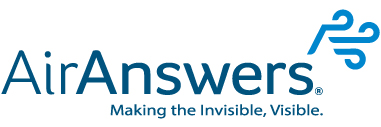COVID Is In The Air
In July of 2020, 239 scientists called the WHO to action and pushed them to acknowledge airborne transmission of SARS-CoV-2. In October, the CDC published a scientific briefing acknowledging airborne transmission as one of the ways SARS-CoV-2 spreads. The CDC describes airborne transmission as “infection spread through exposure to those virus-containing respiratory droplets comprised of smaller droplets and particles that can remain suspended in the air over long distances (usually greater than 6 feet) and time (typically hours)” (CDC).
This is worrisome because diseases with airborne transmission tend to have high attack rates, as they can spread through the air to quickly infect many people in a short period of time.
Airborne transmission for SARS-CoV-2 is most likely to happen:
- In enclosed spaces - confined spaces lead to an increase in the concentration of respiratory droplets in the air.
- With prolonged exposure to respiratory droplets - the longer someone is exposed to infectious droplets the greater their risk of infection.
- In areas with poor ventilation and air sanitization - poor ventilation and sanitization allow for a buildup of infectious respiratory droplets. Good ventilation pushes indoor air containing infectious particles out and pulls in fresh air from the outside.
With the added threat of airborne transmission, it is clear that cleaning and monitoring surfaces for the SARS-CoV-2 virus is not enough. We must also look to the air to prevent widespread infection. Businesses have been investing in increased cleaning along with air filtration and ventilation technology, but how do we know those protocols are working? Are they efficient and effective at reducing the presence of SARS-CoV-2 in the air? AirAnswers® is the solution to these problems.
AirAnswers® is a patented revolutionary device that captures all biological particles down to 0.1 microns. These are the invisible particles like allergens, mold, and viruses that affect health. AirAnswers® assesses over 150 liters of air per minute which is over 1.3 million breaths of air in the recommended 3 day testing protocol. Sampling a large volume of air gives a complete picture of what is in the air. The all in one service also provides laboratory testing to give you thorough and actionable results about the quality of your indoor air. Weekly assessments with AirAnswers® provide longitudinal data to update or maintain cleaning protocols while contributing to ongoing peace-of-mind and increasing confidence.










